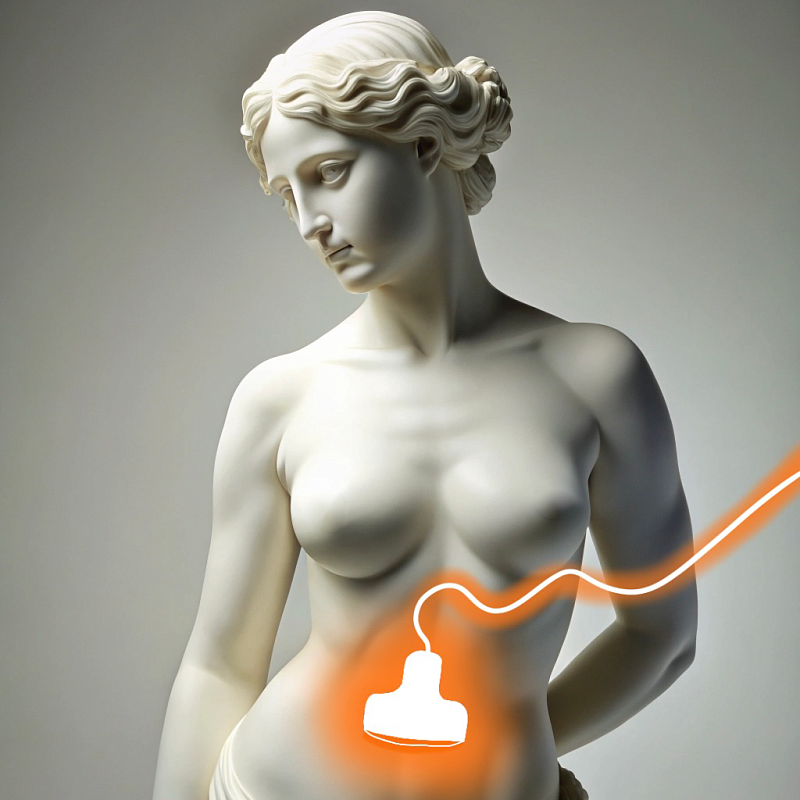Ultrasound of the joints
A diagnostic method that allows you to assess the condition of soft tissues, tendons, ligaments and cartilage structures of the joint. It is used to detect inflammatory, traumatic and degenerative changes in joints.

Ultrasound examination of joints is indicated for various symptoms, such as pain, swelling, limited mobility, changes in the shape of the joint, clicks when moving.
Ultrasound of the joints does not require special training. It is enough for the patient to remove clothes and jewelry from the area under study. Additional examinations may be prescribed, depending on the symptoms and the diagnosis.
During the procedure, the patient sits or lies down, depending on the joint being examined. The doctor applies a transparent gel to the skin and runs the sensor over the joint area to get an image on the screen. During the examination, the doctor may ask you to move the limb to better visualize the damage during exercise. The procedure usually takes about 15-30 minutes.
A high-frequency ultrasound machine is used for ultrasound. Modern sensors have high resolution and allow you to get a detailed image of small structures.
The patient can immediately return to the normal rhythm of life. If a pathology is detected, the doctor prescribes appropriate treatment or directs to a narrow-profile specialist.
Benefits
Safety and versatility
Ultrasound is suitable for patients of any age.
Detailed visualization of soft tissues
The method allows you to examine soft tissues, cartilage, tendons and ligaments.
Dynamic evaluation
The ability to evaluate the joint during movement helps to identify hidden pathologies.
Repeatability
The procedure can be performed as many times as necessary to monitor the treatment and condition of the joints.
Frequently Asked Questions
Is it possible to use ultrasound to diagnose all types of joint pathologies?
How often can joint ultrasounds be performed?
Will additional examination be required after ultrasound of the joints?
Will it hurt during the ultrasound?
Didn't find an answer to your question?
You can describe your problem in detail and ask a question to the doctor. He will answer you and help you find a solution
Врачи
Смотреть всех врачейUltrasound diagnostician, Candidate of Medical Sciences, Higher Qualifying Category Physician. Head of the Functional and Ultrasound Diagnostics department.
Ultrasound Diagnostics Doctor
Similar referral activities
Ultrasound of the abdominal cavity
Ultrasound allows you to visualize internal organs such as the liver, gallbladder, pancreas, spleen, kidneys and other structures.
Ultrasound of the gallbladder
A study that allows you to assess the condition and functionality of the gallbladder, as well as identify pathologies such as stones, inflammatory processes and neoplasms.
Ultrasound of the musculoskeletal system
Ultrasound examination, which provides high-precision visualization of muscles, tendons, joints and bone surfaces, allows you to quickly identify injuries and diseases.
Ultrasound of the mammary glands
A diagnostic method that allows you to evaluate the structure of breast tissue and identify pathological changes. Suitable for women of all ages and health conditions.
Ultrasound of soft tissues
A study that allows you to assess the condition of the skin, subcutaneous fat, muscles, tendons, lymph nodes and blood vessels. It helps to identify inflammatory processes, hematomas, tumor formations and traumatic injuries.
Ultrasound of the pelvic organs
Ultrasound allows you to visualize and assess the condition of the internal organs of the pelvis in women and men. In women, the study includes examination of the uterus, ovaries and fallopian tubes, in men — the prostate gland and seminal vesicles.

